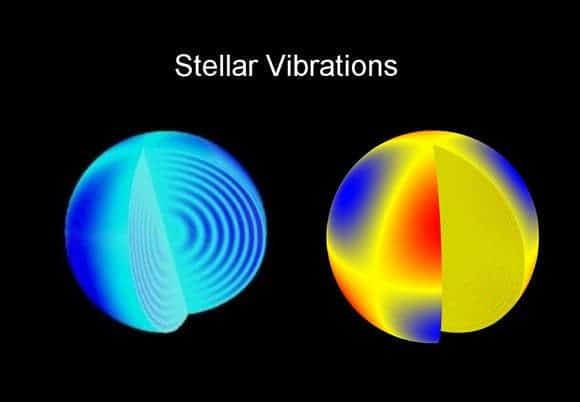
The red giant in case is orbited by two smaller, red dwarf stars that also orbit each other, and astroseismologists are baffled by it. Astroseismology, which is just as awesome as it sounds, studies stars by analyzing the sound wave it emits; basically, within a star, masses from nearby the core move towards the surface creating great pressure waves, essentially low frequency sound waves. By studying those sound waves, you can find out a great deal about the star in case.
But this case is a special one; from Kepler’s point of view, the two smaller binary stars pass in front of one another as they orbit each other, and they in turn pass in front of the red giant, which makes it a triply eclipsing system. Study leader, Aliz Derekas, of Eotvos University in Hungary is absolutely surprised.
“This red giant star should pulsate,” she said. “We now know all red giants show some oscillations – the surface of the star should show some waves that should be in the light curve. We can estimate the period of these oscillations, and this red giant doesn’t show that period.”
At the moment, the best guess they have is that the gravitational forces at work between the three stars somehow greatly dampen the effects of the oscillations.

“When you have stars in a binary or triple system, and one of them burns all its hydrogen and becomes a red giant, if it’s close enough it can start to dump some of its material onto that other star,” Mike Montgomery, an astronomer at the University of Texas at Austin explained. “This is just circumstantial evidence, but maybe its internal structure isn’t what it would have been if it were a single star, and that’s somehow affecting its ability to pulsate.”
This is yet another display of Kepler’s prolific power of discovery, which can only mean that we can expect more and more discoveries of this type (and not only), and more mysteries await… just around the corner.









